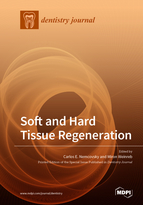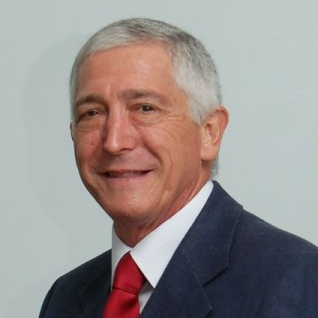Soft and Hard Tissue Regeneration
A special issue of Dentistry Journal (ISSN 2304-6767). This special issue belongs to the section "Oral Hygiene, Periodontology and Peri-implant Diseases".
Deadline for manuscript submissions: closed (30 May 2019) | Viewed by 42610
Special Issue Editors
Interests: soft and hard tissue reconstruction
Special Issues, Collections and Topics in MDPI journals
Special Issue Information
Dear Colleagues,
This special issue entitled “Soft and hard tissue regeneration” will cover both periodontal and implant therapies.
Regenerative periodontal treatment goal is to restore functional periodontal support offering a valuable treatment alternative even for teeth with large periodontal destruction, which may be successfully treated and maintained in health for long periods. In most cases where teeth are extracted for periodontal reasons, implant therapy will demand large bone augmentation procedures.
Lack of sufficient bone volume may prevent placement of dental implants.
In extreme cases, large bone reconstruction is indispensable before implant placement can be performed. Although, most bone grafts are only able to fill and maintain a space, where bone regeneration can occur (“osseoconductive”), the ideal bone graft will also promote osseous regeneration (“osseoinductive”).
Several bone augmentation procedures have been described, each, presenting advantages and shortcomings.
Success of bone augmentation procedures depends on the presence of bone forming cells, primary wound closure over the augmented area, space creation and maintenance where bone can grow and proper angiogenesis of the grafted area.
Factors that influence the choice of the surgical technique are the estimated duration of surgical procedure, its complexity, cost, total estimated length of procedure until the final rehabilitations may be installed and the surgeons’ experience.
This special issue will have a definite clinical orientation, and be entirely dedicated to soft and hard tissue regenerative treatment alternatives, both in periodontal and implant therapy, discussing their rationale, indications and clinical procedures. Internationally renowned leading researchers and clinicians will contribute with articles in their field of expertize.
Prof. Dr. Carlos E. Nemcovsky
Prof. Dr. Miron Weinreb
Guest Editors
Manuscript Submission Information
Manuscripts should be submitted online at www.mdpi.com by registering and logging in to this website. Once you are registered, click here to go to the submission form. Manuscripts can be submitted until the deadline. All submissions that pass pre-check are peer-reviewed. Accepted papers will be published continuously in the journal (as soon as accepted) and will be listed together on the special issue website. Research articles, review articles as well as short communications are invited. For planned papers, a title and short abstract (about 100 words) can be sent to the Editorial Office for announcement on this website.
Submitted manuscripts should not have been published previously, nor be under consideration for publication elsewhere (except conference proceedings papers). All manuscripts are thoroughly refereed through a single-blind peer-review process. A guide for authors and other relevant information for submission of manuscripts is available on the Instructions for Authors page. Dentistry Journal is an international peer-reviewed open access monthly journal published by MDPI.
Please visit the Instructions for Authors page before submitting a manuscript. The Article Processing Charge (APC) for publication in this open access journal is 2000 CHF (Swiss Francs). Submitted papers should be well formatted and use good English. Authors may use MDPI's English editing service prior to publication or during author revisions.
Keywords
- periodontal treatment
- dental implants
- orthodontic treatment
- complications
- pre-clinical research
- clinical research
- esthetics
- maxillary sinus
- bone augmentation
- bone grafts
- membranes
- osseo-conduction
- osseo-induction
- growth factors
- therapy








